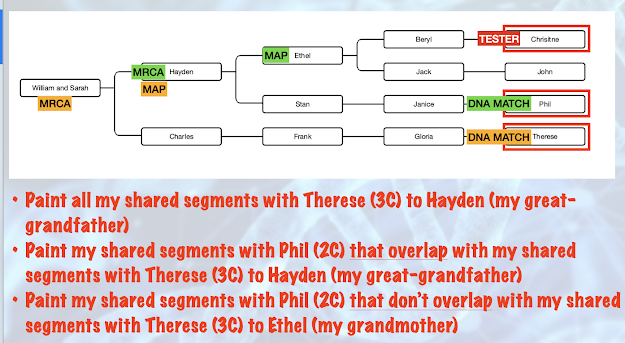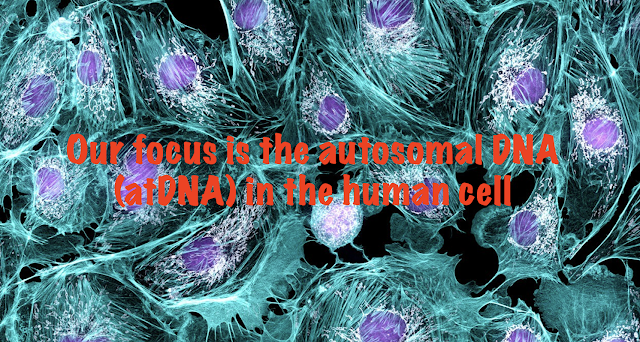Chromosome mapping at DNA Painter
Below are notes for those who attended the session at the Society of Australian Genealogists by webinar on 28 August 2020. Others are welcome to use these notes for their personal research. Please contact me at chrisw9953[at]gmail[dot]com for other uses. I'll strive to update the notes as there are further developments or my understanding of the area grows.
Chromosome mapping is a methodology that-
- looks at the autosomal and X-DNA you share with your matches and
- identifies which ancestor or ancestral couple passed that segment of DNA to you.
For males, we map chromosomes 1 to 22 and the X chromosome (at chromosome 23) inherited from the mother. For females, we map all chromosomes 1 to 23 as females get one X chromosome from their father and one from their mother.
Why map chromosomes?
- It's fun! We know that we receive 50% of our DNA from our father and 50% our mother. But how much did we received from each of our 4 grandparents, 8 great-grandparents, 16 2nd great-grandparents? How many generations can we track our DNA back?
- It's helpful! Here's another way of working out where your DNA matches fit into your pedigree. This may lead to breaking down brick walls!
- With a little qualification....Our shared DNA could come from common ancestors that we don't know about - remember the Irish and endogamy.
Who do I map to?
Before starting, you need to decide if you're mapping to an ancestor or an ancestral couple. It's two ways of expressing the same thing. I map to an ancestor as it makes more sense to me particularly when there are half relationships. You decide which way to go and stick with it.
Which DNA matches to map? I have a DNA match with my paternal 1st cousin, Robert. Our most recent common ancestors are our grandparents, Jim and Essie. I could "paint" our shared DNA to Jim and Essie or my father, Frank. Two sides of the same coin!
"Inferred" mapping of DNA segments - The origin of DNA segments can be "inferred" where a parent and child have tested. In this example, Karen, Beryl and Christine have tested. Any segments that Christine shares with Karen have come to Christine through Kel. Any additional segments that Beryl (but not Christine) shares with Karen must have come to Christine from Ethel.
Where to get your shared match data from?
I like to compare "apples with apples" and have my DNA at all sites. So if the match is at FTDNA, I paint from there. The only match data I take from GEDmatch.com is for AncestryDNA matches.Four examples of using more distant cousins shared segments in the paint for closer cousins
In this example, I have DNA matches with my maternal first cousin, John, and my maternal first cousin once removed, Carol. Initially, I'd paint the segments that I shared with John to my mother, Beryl, and with Carol to my maternal grandmother, Ethel. But now, for overlapping segments between John and Carol, I paint John's back one generation to Ethel. Here's the step by step instructions-
In this example, I have DNA matches with my maternal second cousin, Phil, and my maternal third cousin, Therese. Here's the step by step instructions for the "paint"-
In this example, I have DNA matches with my maternal first cousin, John, and my maternal third cousin, Therese. Here's the step by step instructions for the "paint"-
Some tip for using the Key (aka Legend) in DNA Painter
The placement of names in the key determines their appearance on "the paint". Lower in the key are overlaid by those higher on the key. You can break into paternal and maternal and the most distant to closest ancestor within each or simply from the most distant to closest ancestor. Chose one way and stick with it. Have any unknown groups at the bottom of the key. Here's my current key-
Hope this helps with your painting...have fun and unravel some of those mysteries!










